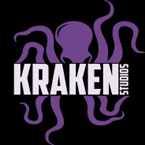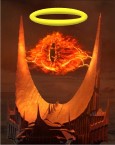mannerheim4
Posts: 83
Joined: 9/16/2013
Status: offline

|
quote:
ORIGINAL: Numdydar
quote:
ORIGINAL: mannerheim4
On Japanese "historical" setting, it was my understanding that the Japanese did NOT keep their fleets together in one large group. There are numerous instances of Japanese spreading forces, Midway immediately comes to mind.
Joe
These are the CVs that were part of the 1st Air Fleet. The 5th Carrier Division was split off to support the PM invasion which resulted in the Coral Sea battles.
1st Carrier Division Akagi, Kaga
2nd Carrier Division Hiryū, Sōryū
4th Carrier Division Ryūjō, Shōhō
5th Carrier Division Shōkaku, Zuikaku
The other six CVs were always together until they were sunk at Midway.
So having a 6+ CV fleet running around in the game is one thing that is historical.
In War in the Pacific as Japan, I try and keep this fleet together as long as I can  Typically I can keep them until mid '43 when it starts to become a 'use them or lose them' situation for Japan. Typically I can keep them until mid '43 when it starts to become a 'use them or lose them' situation for Japan.
Not sure how WPP handles the Essex CVs coming online, but once they start appearing in WitP, it is pretty much 'game over' for CV versus CV battles for Japan.
Well, historical - if you count a half a year up to Coral Sea.
As for the Essex class, not sure if it matters much if the US tries to take on the killer stack and loses a few CV's. In the Solomon campaign, I think the US gets 5 CV's over the course of the game as reinforcements. But it's easy to lose a few to the "Death Star". I suppose the strategy for the US is to maintain a CV force in being until the Essex class arrives (I think three of them) and then you can have a 8 or 9 CV v 6 CV battle? Does it come down to that???
At any rate, I think the game does show what would happen if Midway didn't occur. US can't go beyond Guadalcanal until the Essex class arrives in mid-1943 and the huge CV battle clears away some of the Jap CV's.
Joe
|
 Printable Version
Printable Version






 Typically I can keep them until mid '43 when it starts to become a 'use them or lose them' situation for Japan.
Typically I can keep them until mid '43 when it starts to become a 'use them or lose them' situation for Japan. 




 New Messages
New Messages No New Messages
No New Messages Hot Topic w/ New Messages
Hot Topic w/ New Messages Hot Topic w/o New Messages
Hot Topic w/o New Messages Locked w/ New Messages
Locked w/ New Messages Locked w/o New Messages
Locked w/o New Messages Post New Thread
Post New Thread